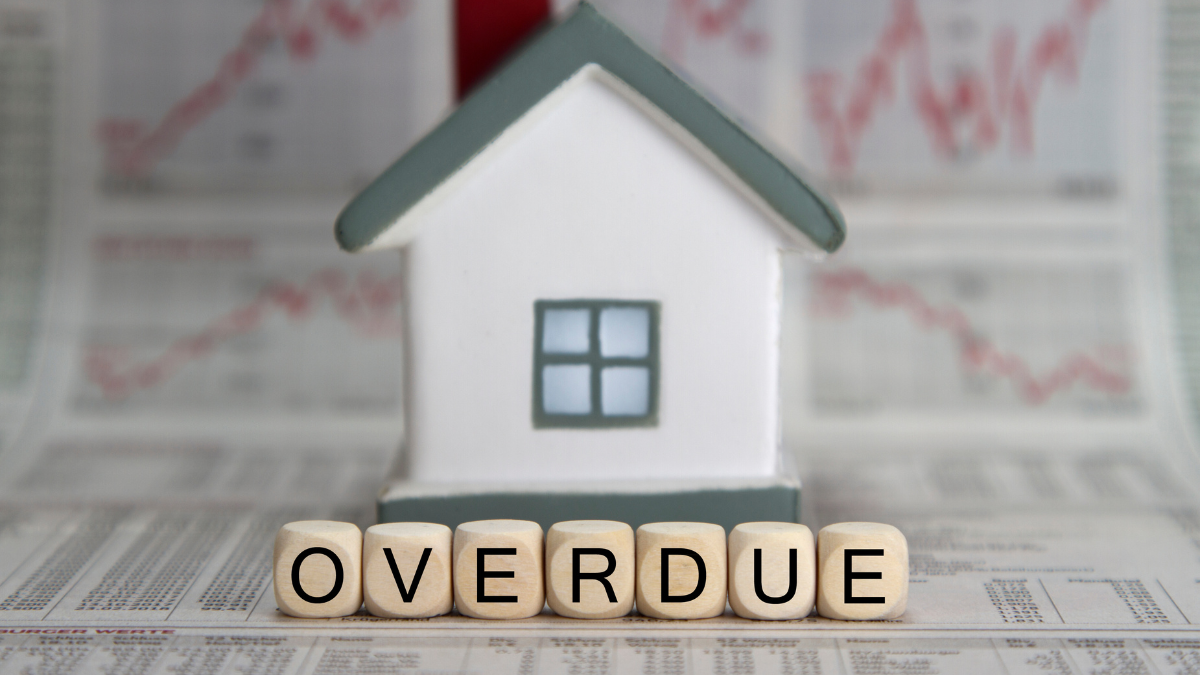
With landlords under pressure to fund ever-stricter energy efficiency requirements, a new report appears to make the government’s ‘one size fits all’ approach inappropriate for the private rental sector.
The report comes from the Office for National Statistics and it shows that three fifths of assessed homes in England and Wales have low energy efficiency ratings.
The ONS says the age of a property is the most significant factor associated with energy efficiency, ahead of fuel type and property type.
Homes built in 2012 or later in England and Wales are much more likely to have one of the top three energy efficiency ratings than older homes.
Almost all homes built since 2012 in England and Wales have a high energy efficiency rating, compared with just 12 per cent of assessed homes built before 1900 in England, and eight per cent of homes built before 1900 in Wales.
The age of a dwelling affects the energy efficiency as building techniques and regulations have changed over time, alongside wear and tear.
Overall, fewer than half of assessed homes in both England (42 per cent) and Wales (37 per cent) have an Energy Performance Certificate rating of C or higher.
Propertymark’s policy and campaigns manager Timothy Douglas says: “The UK government must take these findings seriously and understand the huge challenge that many landlords face to upgrade property which introduces a real risk of many exiting the sector. To navigate this, they must provide funding and support based on much broader considerations.”
The ONS says: “Controlling for other factors, the age of a dwelling has the biggest impact on its energy efficiency, with newer homes much more likely than older homes to have an EPC rating of C or above.
“To understand the biggest influences on a home’s energy efficiency, we have used a logistic regression model to assess the impact of different characteristics in isolation (or controlling for other variables). The data used in this analysis only covers homes for which an EPC exists, and therefore doesn't reflect the entire housing stock.
“Newer homes are the most likely to be energy efficient. Almost all dwellings in England and Wales built since 2012 have an EPC rating of C or above, and as such the odds of a house of this age having a high rating are extremely high compared with houses built earlier.
“Homes built before 1900 were the least likely to have a high efficiency rating.”
Want to comment on this story? Our focus is on providing a platform for you to share your insights and views and we welcome contributions.
If any post is considered to victimise, harass, degrade or intimidate an individual or group of individuals, then the post may be deleted and the individual immediately banned from posting in future.
Please help us by reporting comments you consider to be unduly offensive so we can review and take action if necessary. Thank you.






.jpg)









.jpg)









%20(002).png)




.png)






Join the conversation
Jump to latest comment and add your reply
For the life of me I can't understand what all the fuss is about landlords not being able to improve the energy efficiency (and therefore the EPC) of their investment buildings. I, like thousands of other professional landlords, realised this when EPCs were introduced way back in 2008. It not like the Government has sprung it on us!
Over the years I've been spending some of my annual rental income on improving loft insulation and cavity wall insulation. I've used external wall insulation on one of my properties - the EPC up-lift and energy cost saving for the tenant have been extremely good.
I've recently installed some Dimplex Quantum night storage heaters in a rental flat. I've helped my tenant sign-up to a off-peak electricity tariff, which is a fraction of the cost of expensive 'day time' electricity'. Night storage heaters have come on massively since the 1980s and retain the heat all day whilst the tenant is out at work. It's a pile of bricks in a steel box and is ideal for rental homes where the tenant can be less than careful. I don't own shares in Dimplex but am seriously thinking about it.
A domestic EPC is an energy COST calculation, the worse the Grade the more my tenant has to pay to the NPower, British Gas (and indirectly the Qatari Royal Family) and the less money they have to pay my rent. It makes good financial sense to drive down the money my tenants have to pay in energy costs. Don't landlords on this Blog understand this? Every single resi landlord mate of mine in the Thames Valley has either fixed-up their houses and flats to EPC Grade C or long since sold their 'difficult' assets and reinvested the capital in energy efficient homes (which can indeed be both older or modern buildings)
For me and other professional landlords this simply is not an issue and not a problem. Relaxing Planning regulations so I and others can build a few more houses and flats for renters would be a far better issue for us all to campaign on. Domestic EPCs and MEES is NOT what intelligent landlords worry about.
Interesting that the only person who appears to agree with you is.....you!
Housing is only one form of energy usage. Transport is also a major use of energy.
Older houses tend to be located close to city centres, village centres, schools, workplaces and other amenities so people living in older houses often need to use far less transport.
Whichever way you look at it life costs. People have choices regarding how to spend their money. Some will prefer to live in a new house on a new build estate with low gas and electric bills but need to drive everywhere because the house is miles from shops or work. Others will prefer to live in an older house closer to amenities and maybe not need to own a car. The energy bills may be a bit higher but how much are they saving in transport costs?
Which scenario is really more energy efficient?
My rental flat is a period build with solid walls in a conservation area. It was a C, recently recategorised as a D due to 'the changes in how an EPC is calculated'. The eye-watering sums required to get it to a C would take a minimum of 150 years to pay off in cheaper energy costs according to the EPC report, and would take several m2 of interior space. The near-identical flat next door has recently been awarded a C. Moving goalposts, inconsistent certification standards, huge upheaval for tenants and negative returns on investment mean that any sanity check would rule out a blanket requirement to get properties to a C. If the government doesn't see sense, we can assume they are trying to purge private landlords from the market. In my case, this is the only property I own.
I do not understand the fuss about the EPC. And why only landlords are suffering from this coming legislation? Millions of people who are home owners are living in houses that have low EPC. And the government is not forcing them to upgrade their home to a higher level. WHY ONLY LANDLORDS SHOULD DO IT? The tenants can also choose what EPC rate they would like to rent.
You have answered your own question in a way!
The Govt. have clearly stated that all rental properties have to comply to EPC rules or Landlords will NOT be allowed to rent their houses until compliance is corrected. I think this must happen by 2028?
AND - Laugh of laugh, Council houses do not have to comply!!!!! And there is no date!
You work it out!!!!!
I'm with you completely, but could I just add that my understanding is that is not for ALL landlords.
It is for the PRS only.
Then look at the stats- out of all rentals the PRS makes up 20% and the social sector the remaining 80%.
So if you choose to differentiate between hitting all landlords then why not start with the 80%- isn't that just simple logical reasoning that that is going to have the most significant impact.
For those that haven't already, it's time to 'wake up and smell the coffee' that the government has been looking to diminish/ finish off the PRS for many years.
This approach just helps them achieve their objective. It's really as simple as that.
Elizabeth, totally agree with you and Saul Smart and some of the other comments posted.
When the introduction of the increase of tax was phased in between 2015-2021, “Only for the Private Landlords” many took to off loading properties as it became unaffordable for them to retain them.
Why have commercial landlords have not been targeted as heavily?
Why did the Government scrap section 21?
Why is the Government imposing new restrictions at every angle to apply pressure ONLY to the private landlord?
They clearly are trying to get rid of the private landlords!!
Ive explaindthis before. Housing in Britain had poor insulation because we have lots of coal and it is cheaper to heat than insulate. Money was invested in buiiding with bricks,slate and blocks due to its longevity and resistance to a damp climate. Insulation is mainly made with oil, gas or coal and lots of heat and also labour to fit it. So you are generaiting a lot of CO2 upfront. Modern properties are often built with timber frames and OSB, but they can be very susceptible to sound, moisture,fire and insect attack and are normally unlikely to last as long as brick built. Its not worked out very well with tower blocks has it? Further CO2 is a fertiliser and vital for humans lifecycle. Problem for thr globe is the massive increase in population.
Martin a good job you are professional and intelligent LL’s. It’s a shame we are all so stupid, we’ll done for complying with Government rules it must be refreshing to be aware they know best about energy & Insulation. Grenfell killing 72 wrong Insulation, billions of £’s now required to fix Insulation problems on thousands of Blocks of Flats through out the Country. Always someone else’s problem. Reduce Rents, reduced income tax Gov’ won’t like that who’s going to keep all the freeloaders on the system.
Michael did you notice that our '' professional intelligent landlord'' here ticked his own like box, arrogance springs to mind.
Martin my friend how many HMO Licensees did you have to purchase and the huge cost of the work but not just once on each property but repeated again & again, this cost was not mentioned. I would love to know, it would buy a lot of Insulation & Dimplex heaters.
People dumping their properties that are not Compliant are cowards making a run for it, it’s doesn’t improve the Countries energy efficiency performance, who do you think is going to fix them, just passing the buck.
Michael I am 'dumping' my properties and I would argue it is good business sense. The PRS hitting EPC C (the wrong measure in the first place) will not save the planet and unless all housing is mandated to the same level the savings in CO2 will be minor compared to the cost.
I am happy to do my bit for the planet - but I can't do it all on my own - so my lovely Victorian Houses and 1/2 bed electrically heated starter homes will be available to all FTBs. The Govt should be delighted!
Strange thing about Grenfel tower is that I have tried burning that type of insulation and it did not burn! Further the bloke who set it on fire, and it would have taken a lot of heat, has been spirited away.
In reality a lot of people should be charged with manslaughter.
I do not agree with some who say this is just a big fuss over nothing, some properties are simply not able to reach a C, most LL's have 1 or 2 properties and for them (who may work full time as well) spending 10's of thousands of pounds to get nothing more in rent is a crazy idea. I do think this will come in and i am making plans to sell my electrically heated properties if the new way to calculate an EPC does not favour electric heating. My properties are old, have no cavity wall insulation and i am not able to change the outside of the building as it is not mine. it also needs to be understood that a 2 bed terraced house in the north could be worth £80k whereas a similar house in London will be worth..... well you get the idea. The refurb costs for both to bring them to a C will be very similar but the % of the value are worlds apart, if i had a terraced in London worth £800k plus i would maybe consider it but at £80k!!! There will be a mass sell off if this goes ahead and is not watered down.
Tricia, ok fair enough but will those properties that are not compliant be available for the Schemes to purchase.
What schemes? They will be available for anyone who has a deposit and can get a mortgage and at £150-200k should be easily accessible to many FTBs. I have rented them out to happy tenants for over a decade so I am sure they will make perfectly acceptable homes for young people.
Sorry it was my understanding that first time buyer schemes and free Stamp Duty were meant to be for new built / compliant property
“Help to buy” perhaps I didn’t explain properly.
There are some Govt schemes for FTBs and these may only be for new houses (which are priced at a premium because of this) but there are plenty of FTBs who buy without the Govt's help. The SDLT exemption is for any purchase by a FTB so plenty out there who will be wanting an older, established house and other buyers who are not FTBs will only pay 2% over £125k upto £250k :)
I just had a D rated EPC issued on a 1929 built semi with double glazed windows, A rated boiler, LED lighting and well insulated loft To achieve a C it will require the concrete floor taking up and relaying with 150mm insulation and adding an insulated layer of construction over the external brick walls. Estimated to cost £60k and be 3 months work - maximum potential savings of £400 a year. Do the maths, why would anyone do it.
The way I understand things if it costs more than £10 k you get an exception . When the minimum E rating came in I had a G rated property which I got up to an F, I had a MEES report done which said it would cost £14K to get up to an E so I applied and got an exception, I think many E & D rated properties will be needing much more than £10k spent on them to get them to a C so there will be a lot of exceptions issued, we shall see.
Lots of major exaggerations there, 3 months and £60k LOL
The so called over population is another myth .
You could get the worlds entire population in the state of Texas and they could live like the people of Manhattan, plenty of space not packed like sardines
The whole thing is one gigantic con designed to destroy the middle and working class and destroy the west mostly funded by China . It’s basically ww3 without one bullet being fired …
The uk = only 5% is actually built on !
If you are dependant on electric heating or heat pumps,unfortunately smart meters are capable of switching off the power to the household from a remote location. This is known as Load Shedding and is their to allow the grid to stay up when "renewables" arent working. As an engineer I know their is no such thing as "renewables" this is a contradiction of Bernoullis theorem. (energy is neither destroyed nor lost merely transferred) . Its like pretending that you have perpetual energy, however we have governments with perpetual hyperbole!.
George, the Chinese are replicating the British Empire and treat us as a Vassal state. Most land in Britain is hilly and unsuitable for agriculture and housing. We need agriculture to eat, which uses the sun for lot of its energy. Building on agriculture land is suicidal !
Edwin, I believe you are totally correct you can only have spare Electric if it’s available and if too many go on white meters there won’t be enough, you can’t store Electric really you use it or loose it. At least that’s what I was told when I was Site foreman involved for installation 240 ton transformer & associated works for new sub-station at Washway Farm, Skelmersdale, Lancashire in 1969.
Thnkyou Micheal.
Wooden windmills were great example of engineering and very clever. However if you have crop to grind or a river to draw water from or a flood to drain or to get drimking water etc. you are going to be starving drowned thirsty etc if its not windy. So along comes the steam engine, hooray. And now its back to medieval times. Roll on Paupery.
Where is any information on what works reduce energy consumption and especially by how much and which features increase consumption.
We need that information NOW!!!!!!
Precisely.
We need a full list of what can be done to improve an EPC rating, not just 3 or 4 things that are often not possible due to leasehold or conservation area restrictions.
If an EPC makes an assumption such as the roof is uninsulated we need the list of improvements to include insulating the roof and how many extra points it will give us. Instead they all seem to recommend insulating the floor which is hugely expensive, can only realistically be done if we evict the tenants and only adds 1 or 2 points to the EPC score. Replacing an old night storage heater with a Dimplex Quantum improves the score but I have no idea by how many points.
Replacing a gas boiler with a heat pump loses a load of points but again I have no idea how many. Putting solar panels on the roof improves the score usually by between 7 and 10 points regardless of if they are actually orientated correctly. Putting a thicker jacket on a hot water cylinder costs about £20 and adds 1 or 2 points.
Some measures are hugely disruptive and could only be done to an unoccupied property, others such as solar panel installation or replacing an old night storage heater cause virtually no inconvenience to tenants.
There needs to be recognition that a landlord may decide to carry out a different range of work to an owner occupier due to the level of disruption so the recommendations need to reflect that. Or even better don't recommend anything and just give us a full list to choose from.
Jo Westlake - You just need to speak to your EPC Assessor, Lofts are usually 'assumed' as unsulated because of a lack of access to the loft or it is fully boarded, thsi takes away the recommendation to insulate the Loft.
Working with a Decent DEA though and they can over ride the recommendations in a DRAFT EPC to tell you how a fully insulated loft would improve the score.
Loads Phillip Look at useage in kilowatts. unfortunately the ultra rich believe in witchcraft as in deed does the British Establishment. Basically Brnoullis theorem explains it.
Edwin, Parbold was a lovey Mill and only a stream to drive everything, no need to import electric and completely environmentally friendly.
Micheal I remember seeing mills being used for grinding blades, powered by water running off the Clent hills, but drought is the killer, plus the millpond can silt up.
Martin my experience has been very different to yours. As a HMO landlord I pay for the heating in my HMOs and I find that none of the energy conservation measures or the EPC rating makes any difference to the amount of energy used in my HMOs so I wonder where you get your evidence from. For clarification turning the heating off in a HMO for 16 hours a day only saved about 30% of heating cost not the expected 60% but housing standards frown on this saying the tenants should have control over the heating and I have to provide 24/7 heating.
I would love to do my bit to save the planet and me money in heating costs but all the energy efficiency measures I have tried including installation of A rated boilers, energy efficient bulbs, roof and wall insulation and double glazing do not make any difference . I know this because I measured the before and after use of energy used in my HMOs by reading the utility meters on a weekly basis. When I challenge other HMO landlords as to their savings after they've installed some energy conservation measure they can never provide me with any proof and I get replies such as, "of course it does" and "The advertising says it does ". One of the few thing that saves energy usage in my HMOs is to fit prepay electric metres to each of the bedrooms and this almost halves the amount of electric used in the property . The reason I suspect and I am not a energy efficiency expert but from observation is that as the tenants directly pay for the electric they ensure they turn appliances off.
Can anyone out there tell me what else I can do to save on energy usage in a HMO? Nb A fair usage policy does not work with the type of tenants I deal with.
Jim Haliburton
The HMO Daddy
The fact is if it’s free to the user it’s over used and abused.
Like NHS the waste and frivolous spending is unreal,
The fee Bus / Train passes droves of people travelling all over the place, if they had to pay it would be a fraction of the travel, even at LL meetings at Civic Centres they arrive with free pass & 20 houses with them.
The local Supermarket do have local News Paper & Evening News Paper for free, the don’t just take one but 3 or 6.
night.
I have two flats in the same building.
One returned a C and the other a D rating.
When they were built, they were of code 5 standard with loads of insulation.
The assessor told me that it is perfectly normal to have flats in the same building with different ratings, as it all depended where they were situated.
One of the flats is above the other and that got a C rating.
The one below, which is above a shop unit got only a D.
I asked the assessor what I could do to bring it up to a C and as it is electric, he stated that I would have to change the meter to a dual off peak/standard and replace a radiator just in the living room area with a radiator such as a Dimplex Quantum.
If these regulations come in, then I will not have much choice but to carry out this work in order to comply.
It is at least three years away, but I am assessing all my vulnerable properties now, so that when the law changes, I have some plan of action, whether to upgrade or to sell the properties concerned.
The law regarding this hasn't actually been passed yet, but I won't hold my breath that they are likely to abandon it.
He's right about the flooring, the shop is classed as 'partially heated' so scores less points.
If your propertyies are Electrically heated there is a very good chance that they will qualify for Energy Improvement Grants ( ECO or Local Council - LAD ) giving you the improvements at no cost.
Thank you Colin.
I will look into this.
Please login to comment